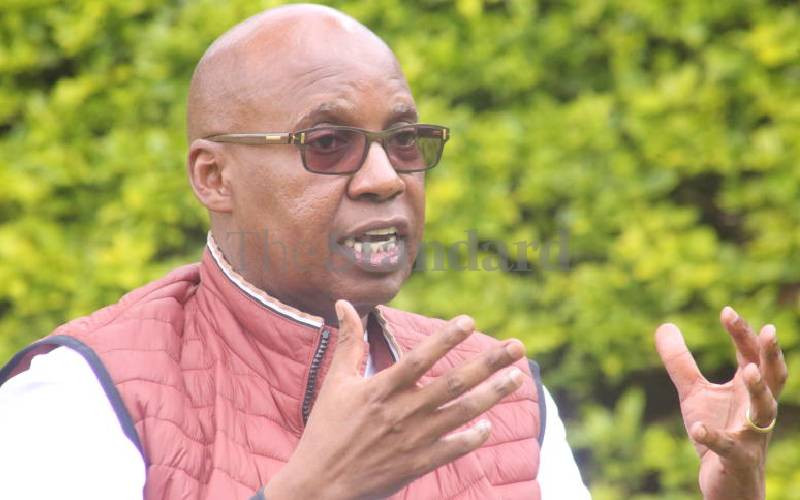It has been a year of mixed returns for the manufacturing sector in East Africa’s largest economy.
In one year, the sector, which accounts for about Sh500 billion of the country’s gross domestic product (GDP), saw two major corporations close shop, but also the first Kenyan-made automobile roll off the production line.
Today, President Uhuru Kenyatta will officiate the opening of the Sh400 million headquarters of the Kenya Association of Manufacturers (KAM), the sector’s lobby, in Nairobi’s Westlands.
While this event marks the close of a very busy 2014 for manufacturers, the leaders behind the industry’s gears and levers say there is still a lot more work to be done if the country is expected to achieve its growth objectives.
Warning bells
The World Bank, in its annual ranking of the cost of doing business across global economies, has stated that legislative requirements, weak enforcement of contracts and slow registration of property are major obstacles to business in Kenya.
In the last two years, the country has registered a drop in seven of the 10 indicators used to measure the ease of doing business, including starting a business, getting a business permit, getting credit and protecting investors.
Economists have also been sounding warning bells for the better part of the last five years that Nairobi is losing a lot of its investment allure to Kigali over its slow pace of implementing business reforms.
However, according to Mr Pradeep Paunrana, the managing director of cement company ARM and KAM chairperson, Kenya’s manufacturing industry may be facing several challenges, but the worst is past.
“Ten years ago, we were facing a situation where blackouts and scheduled maintenance were a common thing, and the manufacturing industry was losing so much money because of this,” he said.
“We had to engage stakeholders, particularly Kenya Power and KenGen, with a view to finding a way to set up dependable infrastructure for emergency power.”
Mr Paunrana said the positive engagement with power stakeholders saw KAM included in the process of monitoring the tendering and setting up of an emergency power supply and its distribution.
“This enabled us save some Sh3 billion between 2004 and 2007, and we followed this up with a programme of data collection on power outages, their frequency and duration, which we share with the country’s power-producing and distributing agencies.”
Such partnerships between the country’s manufacturers and the Government in several other sectors of concern have become inevitable and are slowly bearing fruit, although much remains to be done, he added.
Global focus
Stay informed. Subscribe to our newsletter
“We are at a stage where we are actively engaging with the Government on the new phase of growth that is in the 5,000MW of energy we are expecting in the coming two or so years,” Paunrana said.
Energy supply is of immense importance to the country’s manufacturing sector. Data from the World Bank states that connecting a new warehouse in Kenya to the national electricity grid requires an average of six procedures and 158 days.
KAM said such numbers make the country uncompetitive, especially in an age of melting borders and the new race to set up business in developing economies.
“Global capital is very mobile and investors today have plenty of options on where to put their money, from Asia to Africa and the Americas,” said Paunrana.
“Africa is currently having a lucky break because it has become the global focus for multinationals looking for new growth markets and have their sights trained on the continent’s growing purchasing power.”
However, there is intense competition within the East African Community (EAC), and concern is mounting that Kenya might lose its position as a top regional destination.
Further, according to data from industry experts and the Economic Survey 2014, Kenya’s dominance in intra-EAC trade the past year has reduced considerably as the manufacturing sector reels from new double taxation regimes.
Volume of exports
“Kenyan exports to the EAC region have gone down by 7.4 per cent from about Sh134 billion in 2012 to Sh124 billion in 2013,” reads the survey.
This is despite output in Kenya’s manufacturing industry growing by 4.8 per cent.
The volume of exports to Tanzania reduced to Sh40 billion from Sh46 billion, while exports to Uganda declined to Sh65 billion from Sh67 billion. It was a similar situation in Rwanda, with exports declining by Sh3 billion to Sh13 billion.
Cross-border openness is one of the biggest drivers of economic growth, which means the waning trade between Kenya and its neighbours, though marginal, is a worrying trend.
The matter is made worse by the fact that other economies in Africa have streamlined the legislative regimes governing their industries, giving Kenya an undue disadvantage in competing in regional trade blocks.
Egypt, for example, is cheaper than East Africa for most manufactured goods because they have cheaper power, land for setting up industries is easier to get and labour is also more affordable.
This makes it difficult for Kenya to compete on an equal footing with Egypt, a case in point being the perennial extensions of the Comesa safeguards, without which sugar manufactured in Kenya would be priced out of the market and sugar millers would go bust.
Leading indicator
Escalating cases of insecurity witnessed over the past two years have also seen Kenyan business owners dig deeper into their pockets to bolster their safety and secure their investments.
The Government has also increased its spend on security the last three years, according to data on budgetary allocations. In 2010, Kenya spent Sh61 billion on internal security. This year, it increased to Sh74 billion.
KAM said manufacturers have also seen operating costs go up by as much as 11 per cent due to the need to purchase more security installations and employ more security personnel.
“We are having a situation where you are hiring more people to provide security and surveillance than those providing labour services, and this is a big dis-incentive,” said Paunrana.
Another area of concern has been the country’s wanting transport infrastructure.
“Our roads are very congested and transport costs have really gone up because moving goods from Athi River to Nairobi, for example, takes up to five hours, and you can only do one trip now unlike before,” he added.
It is also difficult to find and procure large tracts of land for setting up industries. The industry lobby is asking both county and national governments to borrow a leaf from other developing economies and set up land banks that can be leased to industries on a long-term basis.
However, with several policy changes in the pipeline and the Government’s commitment to addressing long-standing concerns, manufacturers are upbeat that the future will bring good tidings for doing business in Kenya.
[email protected]
 The Standard Group Plc is a
multi-media organization with investments in media platforms spanning newspaper
print operations, television, radio broadcasting, digital and online services. The
Standard Group is recognized as a leading multi-media house in Kenya with a key
influence in matters of national and international interest.
The Standard Group Plc is a
multi-media organization with investments in media platforms spanning newspaper
print operations, television, radio broadcasting, digital and online services. The
Standard Group is recognized as a leading multi-media house in Kenya with a key
influence in matters of national and international interest.
 The Standard Group Plc is a
multi-media organization with investments in media platforms spanning newspaper
print operations, television, radio broadcasting, digital and online services. The
Standard Group is recognized as a leading multi-media house in Kenya with a key
influence in matters of national and international interest.
The Standard Group Plc is a
multi-media organization with investments in media platforms spanning newspaper
print operations, television, radio broadcasting, digital and online services. The
Standard Group is recognized as a leading multi-media house in Kenya with a key
influence in matters of national and international interest.








